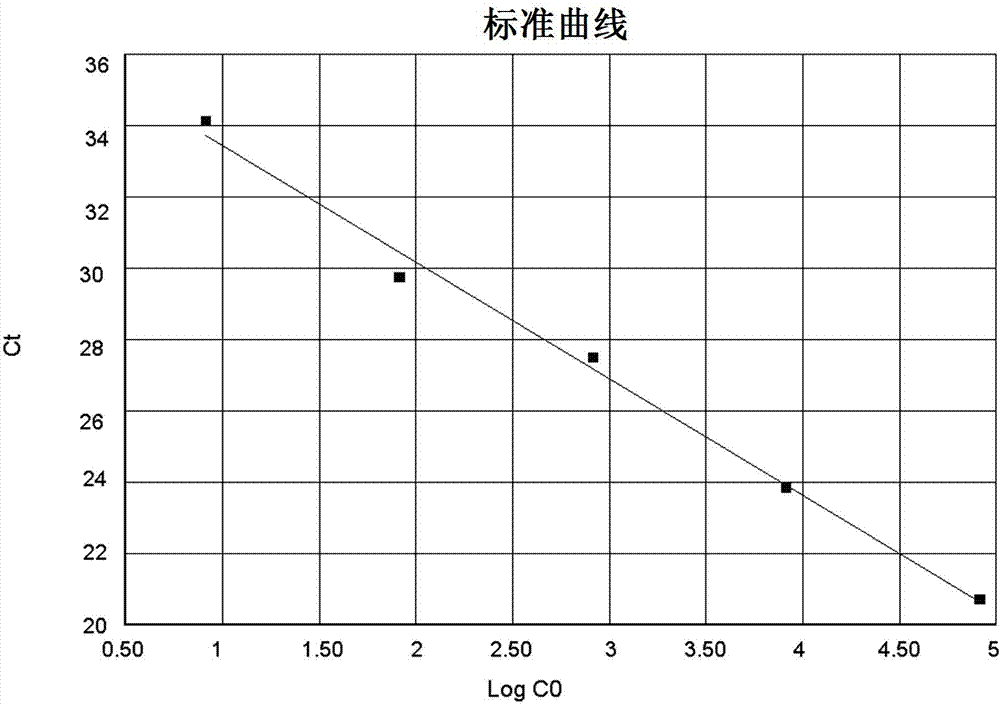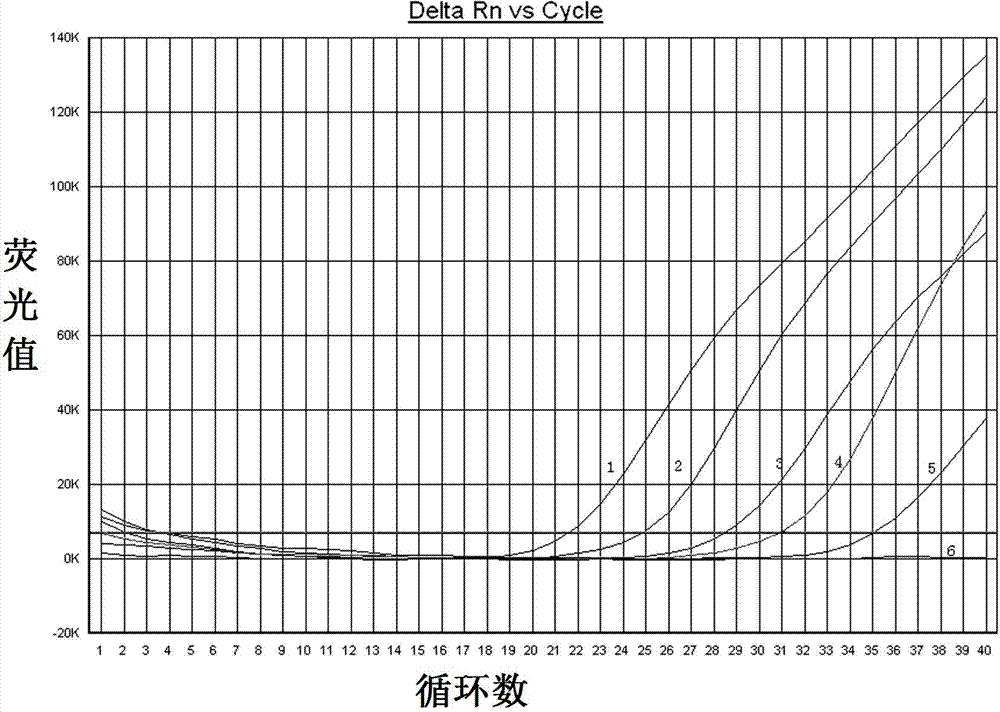Primer pair, probe and kit for specific detection of porcine lymphotropic herpesviruses III
A herpes virus and primer pair technology, which is applied in the field of PCR primer pairs, probes and kits for detecting type III porcine lymphotropic herpes virus, can solve the problems of poor epidemiology and achieve high testing efficiency and application Effects with a wide range and high sensitivity
- Summary
- Abstract
- Description
- Claims
- Application Information
AI Technical Summary
Problems solved by technology
Method used
Image
Examples
Embodiment 1
[0037] Example 1 Design and synthesis of primers and probes
[0038] Download all homologous gene sequences of type III porcine lymphotropic herpes virus from GenBank, and the primers and probes are synthesized by Invitrogen. The sequence of the type porcine lymphotropic herpes virus standard strain (GeneBankNo.AY170315) and The homologous sequence is compared with the homologous gene sequence of type I and type II (type I GeneBankNo.AY177148 and AF478169, Type II GeneBankNo.AF191043, AY170314 and AY170317 ) , Use MEGA software for homology comparison, use primer Express3.0 software to design primers and TaqMan probes,
[0039] The length of the amplified target fragment is 170bp.
[0040] The nucleotide sequence of the upstream primer is shown in PLHV3 D F1;
[0041] The nucleotide sequence of the downstream primer is shown in PLHV3 D R1;
[0042] The nucleotide sequence of the probe used with the above primers is shown in PLHV3 D P1. The 5'end of the probe is labeled with reporte...
Embodiment 2
[0043] Example 2 The extraction steps of total DNA are as follows:
[0044] Add the same amount of anticoagulant buffer solution or use an anticoagulant blood collection tube to collect 3~5Ml pig blood samples, mix them, and store at 2~8℃ for 3 days. Centrifuge the blood sample at 5000r / min for 5min, remove the supernatant, suck the white blood cells on the upper layer of red blood cells, and transfer them to a centrifuge tube without pollution or biological toxicity. Follow the instructions of Beijing Tiangen Biotechnology Company Viral Genomic DNA / RNA Extraction Kit (DP315) to extract viral DNA (the DNA extraction in this experiment is based on the DP315 kit, and other commercial viral DNA extraction kits are applicable), use directly or Store in the refrigerator at -20℃ for later use.
Embodiment 3
[0045] Example 3 Establishment of real-time fluorescent quantitative PCR amplification method
[0046] 1. Real-time fluorescent quantitative PCR reaction system
[0047] Use total DNA as template to perform real-time fluorescent quantitative PCR reaction, that is, a 20μL reaction system contains: 10× fluorescent quantitative PCR buffer 2μL, 0.5μL dNTPs (25mmol / L), 0.5μL primer PLHV3 D F1 (10umol / L) , 0.5μL primer PLHV3 D R1 (10umol / L), 1.2μL magnesium ion (25mmol / L), 0.3μL fluorescent probe (20umol / L), 1μL DNA template, 0.2μL Taq enzyme (5U), and DEPC treated water Make up to 20μL.
[0048] 2. Real-time fluorescence quantitative PCR reaction conditions
[0049] After putting the sample tube into the 7500 fluorescent PCR machine of ABI company, set the following conditions to proceed: 95℃, 2min; 90℃, 10s; 60℃, 40s for a total of 40 cycles. Collect data after each cycle. After the reaction, the result is judged according to the amplification curve and the standard curve.
[0050] 3. E...
PUM
| Property | Measurement | Unit |
|---|---|---|
| Sensitivity | aaaaa | aaaaa |
Abstract
Description
Claims
Application Information
 Login to View More
Login to View More - Generate Ideas
- Intellectual Property
- Life Sciences
- Materials
- Tech Scout
- Unparalleled Data Quality
- Higher Quality Content
- 60% Fewer Hallucinations
Browse by: Latest US Patents, China's latest patents, Technical Efficacy Thesaurus, Application Domain, Technology Topic, Popular Technical Reports.
© 2025 PatSnap. All rights reserved.Legal|Privacy policy|Modern Slavery Act Transparency Statement|Sitemap|About US| Contact US: help@patsnap.com



